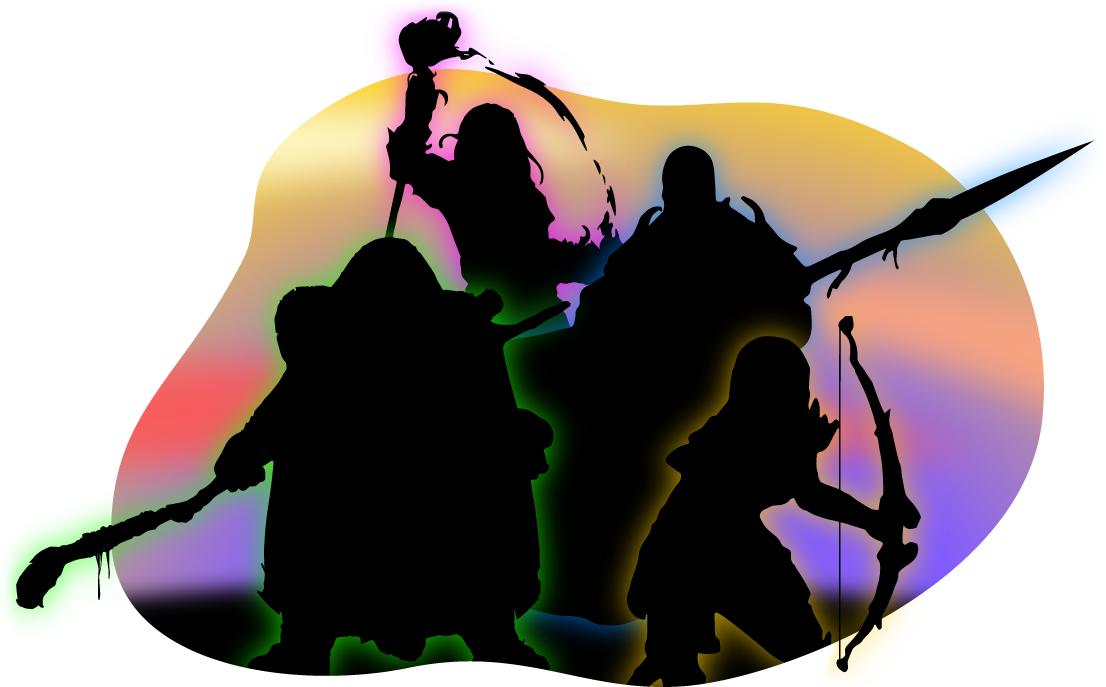 There are many different options for cool characters by mixing classes, races and backgrounds. For an effective Dungeons & Dragons party you would do well to consider the options and balance them off of each other. That way the group as a whole becomes stronger and each player has a chance to shine. These are the build types to consider for your next effective D&D party.
There are many different options for cool characters by mixing classes, races and backgrounds. For an effective Dungeons & Dragons party you would do well to consider the options and balance them off of each other. That way the group as a whole becomes stronger and each player has a chance to shine. These are the build types to consider for your next effective D&D party.
Tank
Standing in the frontline, they can take a hit and deal them back twice as hard. Having a high defence, high HP and/or a way to taunt the enemies into attacking you instead of the squishy PC’s of your party. Classes: Barbarian, Fighter, Monk, Paladin
Healer
Standing either in the center or in the back of the group, they keep everyone on their feet. The party can’t lose if they never go down. Especially if the healer keeps the Tank alive. Classes: Bard, Cleric, Druid (Any PC with healing spells)
Glass Cannon
If you want a decisive end in your battles you need a glass cannon. They go down when hit with a soft breeze, but can decimate the battlefield with each of their spells. Classes: Sorcerer, Wizard
Support / Utility
An often overlooked roll in parties is the Support. But they can make all the difference when they tear down the AC of the enemies, boost the damage output and control the battlefield until only one united team is left standing. Classes: Bard, Druid, Wizard (Any PC with non-combat spells, buffs and de-buffs)
Ranged damage
Wether you throw Eldritch Blasts, shoot arrows or launch Magic Missiles, ranged damage can create a huge advantage both while you are still hidden and while in direct combat. Especially if the enemies have Ranged Damage or even Glass Cannons of their own. Classes: Any PC with bows or ranged spells
Face
All of the previous builds focus on combat but D&D is more than that. A second and huge aspect is Social Interaction. To manage those social situation you don’t all need a high charisma, but when one of you takes up the roll of the Face it would make a huge difference. Classes: Bard, Sorcerer, Warlock (Any PC with high Charisma)
Scout
The third aspect of D&D is exploration and that is where a Scout can really shine. Sneaking ahead and disarming traps can make a Tomb of Horrors a walk in the park. Classes: Ranger, Rogue (Any PC with stealth)
If you want to be an effective team, then try to cover most bases. Your party’s size plays a huge roll in this. Small party’s need to make sure that each player covers multiple types, possibly by Multiclassing (How to Multiclass) or mixing different Schools of Magic. Larger groups meanwhile have more freedom to allow specialised PC’s that are only good at one aspect, knowing that the other players are covering the rest. No matter the groups size, make sure you discuss your build plans during a session zero to ensure there will be more than 5 sessions.
Do you want to play a pre-written PC? Try-out this Rogue Thief Scout (Fabian Miri Lockheart), this Monk/Cleric Support/Tank (Luxian Ombraleaf) this Tiefling Bard Face/Support (Diabelle Ares) or this Ranged Ranger (Aela Clearbranch).
Are you ready to play some D&D, and do you want to further explore fantasy worlds like that of Harry Potter, Pokémon, Hunger Games or Avatar? Try out these free one-shots!